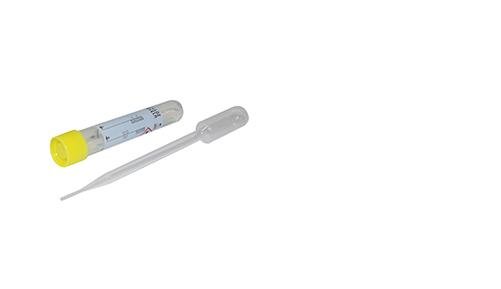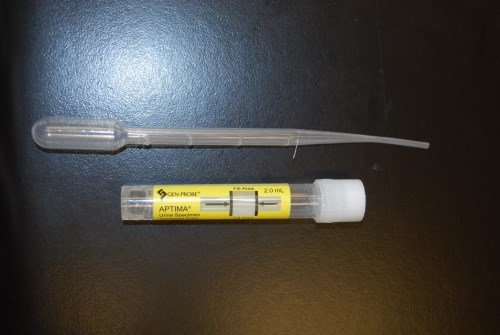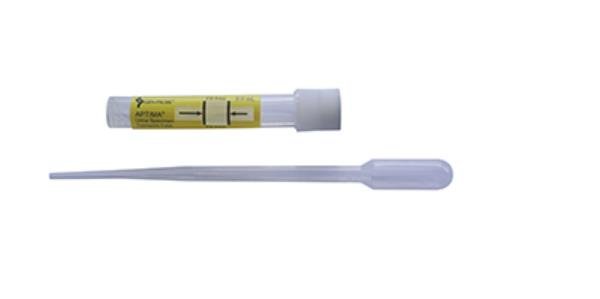Comparing Urine Std Tests To Other Std Tests
Some people still question whether urine testing is as effective at detecting bacterial STDs like chlamydia and gonorrhea. These questions usually focus on the efficacy of the tests in women. Why?
The most common site of female infection is not on the pathway that urine travels out of the body. In contrast, urine passes through the most common site of infection , in men.
A 2015 review that examined 21 studies on the relative effectiveness of using different types of samples to detect chlamydia and gonorrhea found that:
- For chlamydia testing in women, the sensitivity and specificity were 87% and 99% for urine samples compared to cervical samples.
- For chlamydia testing in men, the sensitivity and specificity were 88% and 99% for urine samples compared to urethral samples.
- For gonorrhea testing in women, the sensitivity and specificity were 79% and 99% for urine samples compared to cervical samples.
- For gonorrhea testing in men, the sensitivity and specificity were 92% and 99% for urine samples compared to urethral samples.
By and large, these results are relatively consistent across studies. Interestingly, self-collected vaginal swabs were closer in effectiveness to cervical swabs than urine testing. For some women, those may be a more acceptable alternative to a pelvic exam if urine testing isn’t available.
How To Get Tested
Chlamydia testing is usually ordered by a doctor. In people without symptoms, a doctor can evaluate their risk and suggest an appropriate screening schedule. If a patient has symptoms of this infection, a doctor will order testing to diagnose or rule out chlamydia.
Testing for chlamydia can be conducted at a hospital, doctors office, health clinic, or community health program.
Chlamydia Can Be Treated And Cured With Antibiotics
Individuals diagnosed with chlamydia should abstain from sexual activity for one week after finishing antibiotics. Keep in mind that it is possible to become reinfected with chlamydia after receiving treatment. This is why it is crucial for partners of those who have chlamydia to also get tested and treated if found positive. Chlamydia often occurs along with gonorrhea . If you have one of these STDs, you might have the other because the risk factors and symptoms are very similar. Getting tested for both is important.
Whether or not symptoms are present, testing or screening for chlamydia can be done as early as 24 hours after exposure. The incubation times vary from person-to-person for the most accurate results, get tested two weeks after initial exposure. If you test positive for chlamydia, it is advised to get retested two weeks after completing treatment to be sure that all of the Chlamydia trachomatis bacteria is cleared from your system.
Also Check: Long Term Effects Of Chlamydia
How Will I Get The Chlamydia And Gonorrhea Test Result
You will receive a notification email informing you that your results are available. This email will contain a link to the secure communications area where your results will be available. Please read the email for important information associated with the login process. Once you have successfully logged into the secure communication area, additional instructions will be available to guide you to the appropriate area to view, print and/or save your results.
Appendix: Key Questions Reviewed By The Work Group And Member Responsible For Literature Summary

Performance Characteristics
- Does the sensitivity and specificity of available tests for C. trachomatis and N. gonorrhoeae vary with respect to anatomic site from which the specimen was collected and/or specimen type?
- Joan Chow, DrPH, California Department of Public Health, Richmond, California
- Katherine Whitaker, PhD, Food and Drug Administration, Rockville, Maryland
Screening Applications
- What specimen types are optimal for of C. trachomatis and N. gonorrhoeae screening purposes?
- Charlotte Gaydos, DrPH, Johns Hopkins University, Baltimore, Maryland
- Sarah Guerry, MD, Los Angeles County Department of Health Services, Los Angeles, California
- Barbara Van Der Pol, PhD, Indiana University School of Public Health, Bloomington, Indiana
Economic Considerations
You May Like: How To Test For Oral Chlamydia
Additional Specimen Collection Information
InterferingSubstances: Interference may be observed in the presence of blood, mucin,bilirubin, or Vagisil feminine powder with urine specimens.
Limits Of Urine Tests For Gonorrhea And Chlamydia
In 2018, 1.8 million cases of chlamydia were reported to the CDC in addition to 583,405 cases of gonorrhea. These numbers show an increment of 19% and 63% since 2014 for the two diseases respectively.
Most infections with gonorrhea and chlamydia are asymptomatic. The fact that many people have no symptoms means that the only way to detect and treat these infections is through screening.
In men, these diseases most commonly infect the urethra, and in women the cervix. However, it is possible to get both of these diseases in the throat, from oral sex. Anal sex can also lead to rectal chlamydia and rectal gonorrhea infections.
Neither rectal nor oral/throat infections will be detected by urine testing. It is therefore important to let your healthcare provider know if you have unprotected oral or anal sex. Testing should be done separately for those sites.
Currently, it is recommended that men who have sex with men undergo urine, throat, and anal screening once a year. Other people who regularly have unprotected oral or anal sex should consider a similar screening regimen. People who only engage in vaginal intercourse can get by with urine testing alone for gonorrhea and chlamydia.
Don’t Miss: How Long For Symptoms Of Chlamydia To Show Up
During And After The Test
When you have a urine STD test, it is usually during a regular appointment. You will be asked to pee into a sample collection cup or tube. That tube or cup will be given to one of the medical staff.
Your urine sample will then be sent out to a lab or tested at the clinic. You can leave as soon as you are done giving the sample or when your appointment is finished.
What Do The Results Mean
A positive result means you have been infected with chlamydia. The infection requires treatment with antibiotics. Your health care provider will give you instructions on how to take your medicine. Be sure to take all the required doses. In addition, let your sexual partner know you tested positive for chlamydia, so he or she can be tested and treated promptly.
Learn more about laboratory tests, reference ranges, and understanding results.
Don’t Miss: Does Garlic Get Rid Of Chlamydia
Purpose Of Urine Testing For Stds
It used to be that STD testing, particularly for bacterial STDs, was very uncomfortable.
Men who thought they might have a bacterial STD like chlamydia or gonorrhea got tested by having a swab inserted into their urethra. Women had to undergo a pelvic exam, during which a cervical swab would be taken and tested for bacteria.
The fact that STD testing was uncomfortable and invasive made it less likely that people would undergo regular STD screening.
That probably contributed to what is sometimes known as the hidden epidemic of asymptomatic STDs. Because many STDs have no symptoms, the only way to detect them is through testing. When people aren’t tested regularly, they can spread STDs to their partners without even knowing it.
Urine testing makes it easier for people to undergo STD testing as part of their regular medical care. Note, however, that STD testing is still not a standard part of most annual exams.
Can I Take The Test At Home
Tests are available to detect chlamydia at home. Most at-home chlamydia tests are self-collection kits, which allow you to obtain a swab or sample of urine at home and return it to a laboratory by mail. If an at-home chlamydia test returns positive results, a doctor may suggest confirmation testing with a laboratory-based method.
Also Check: Does Chlamydia And Gonorrhea Go Away
Questions For Your Doctor About Test Results
It can be helpful to bring questions to your doctor to learn more about your chlamydia test results. Helpful questions may include:
- What is my chlamydia test result?
- Did my test check for any other STDs?
- Do I need any treatment based on my results?
- How can I talk to my sexual partners about chlamydia?
- When should I be tested for STDs and how often?
Why It Is Done

A test for chlamydia is done to:
- See if your symptoms of a sexually transmitted infection are caused by a chlamydia infection.
- Check people who are at high risk for being infected with chlamydia. A chlamydia infection doesn’t always cause symptoms.
- Retest people several months after they have been treated for chlamydia.
- Check for infection in your newborn if you had a chlamydia infection at the time of delivery.
Read Also: Does Chlamydia Make You Poop A Lot
How Will I Get The Gonorrhea And Chlamydia Test Result
You will receive a notification email informing you that your results are available. This email will contain a link to the secure communications area where your results will be available. Please read the email for important information associated with the login process. Once you have successfully logged into the secure communication area, additional instructions will be available to guide you to the appropriate area to view, print and/or save your results.
What Does The Test Measure
Chlamydia testing looks for evidence of infection with the bacteria Chlamydia trachomatis. There are several types of tests that can be used to detect chlamydia, including molecular testing, also called Nucleic Acid Amplification Test , and cell culture.
NAAT is the preferred method for detecting a chlamydia infection. This type of test detects the genetic material of Chlamydia trachomatis. It can be performed using a urine sample or swab of fluid taken from a site of potential infection such as the urethra, vagina, rectum, or eye.
Traditionally, NAAT takes a day or more to provide results, but there have also been rapid chlamydia tests developed using NAAT methods. Rapid chlamydia tests can often provide a result within 30 to 90 minutes. Rapid chlamydia tests are typically performed on urine samples or swabs of fluid taken from the vagina or cervix.
Although much less commonly used, cell cultures can help diagnose a chlamydia infection. Chlamydia cell cultures may be used in children with a suspected chlamydia infection, when evaluating potential infections in the anus or rectum, and when initial treatment for chlamydia is unsuccessful. In these cases of treatment failure, doctors may use a cell culture to help understand which treatments may be most effective for an individuals infection.
Other types of chlamydia tests are available but are rarely used given the accuracy and availability of NAAT.
Also Check: Can You Get Rid Of Chlamydia With Antibiotics
What Are The Symptoms Of Gonorrhea
Women
Many women infected with Gonorrhea have no symptoms. If symptoms occur, they appear 2 to 10 days after exposure to the disease. Symptoms of Gonorrhea include:
- Thick, creamy, yellow vaginal discharge
- Burning or pain when you urinate
- Bleeding or spotting between periods
- Menstrual periods that are heavier than usual
- Abdominal pain
- Fever
If symptoms occur, they usually appear 2 to 10 days after you were exposed to the bacteria. Symptoms of Gonorrhea include:
- Thick, yellow discharge from the penis
- Burning or pain when you urinate
- Urge to urinate often
Chlamydia And Gonorrhea Urine Test Random
A chlamydia and gonorrhea urine test, random detects chlamydia trachomatis and neisseria gonorrhoeae which is generally transmitted through sexual contact with an infected partner.
Also Known As: Chlamydia/Gonococcus, Amplicor PCR Chlamydia/Gonococcus, Aptima TMA Chlamydia/Gonococcus, LCR Chlamydia/Gonococcus, ProbeTec, SDA
Methodology: Nucleic acid amplification
Preparation: No fasting required. Patient should not urinate one hour prior to collection.
Test Results: 2-3 days. May take longer based on weather, holiday or lab delays.
Also Known As: Chlamydia/Gonococcus, Amplicor PCR Chlamydia/Gonococcus, Aptima TMA Chlamydia/Gonococcus, LCR Chlamydia/Gonococcus, ProbeTec, SDA
Methodology: Dual Kinetic Assay Target Capture Transcription-Mediated Amplification
Preparation: No fasting required. Patient should not urinate one hour prior to collection.
Test Results: 2-3 days. May take longer based on weather, holiday or lab delays.
You May Like: Can Strep Throat Antibiotics Cure Chlamydia
Are Test Results Accurate
Although chlamydia testing is an important method of finding and treating this common STD, test results could be impacted by the following:
- The use of antibiotics within several days before testing
- Urinating within one hour of sample collection
- Vaginal douching within 24 hours of testing
- Improper sample collection
- Contamination of rectal samples with fecal matter
Chlamydia / N Gonorrhoeae Rna Tma
Includes: Chlamydia trachomatis, Neisseria gonorrhoeae
Methodology: Dual Kinetic Assay Target Capture Transcription-Mediated Amplification
This test was performed using the APTIMA® COMBO2 Assay .
Clinical Significance:C. trachomatis infections are the leading cause of sexually transmitted diseases in the United States. C. trachomatis is known to cause cervicitis, pelvic inflammatory disease , epididymitis and proctitis. It is also the most frequent cause of non-gonococcal urethritis in men. Among women, the consequences of Chlamydial infections are severe if left untreated. Approximately half of Chlamydial infections are asymptomatic. Neisseria gonorrhoeae is the causative agent of gonorrhea. In men, this disease generally results in anterior urethritis accompanied by purulent exudate. In women, the disease is most often found in the cervix, but the vagina and uterus may also be infected.
Alternative Name: CT/NG APTIMA®, CT/GC APTIMA®, Hologic, CT/GC TMA, CT/NG TMA
Additional Preferred Specimens Collection for Test Code 11363: 1 ml liquid cytology collected throughThinprep® Broomor Brush/Spatula0.5 ml of Surepath® preservative fluid collected using Broom or Brush/Spatula Vaginal swabs in the APTIMA® Combo 2 Assay Vaginal Swab Collection Kit
Note: Results from the APTIMA® Combo 2 Assay should be interpreted in conjunction with other laboratory and clinical data available to the clinician.
Supply: A01 – APTIMA Urine Collection
Transport temperature: Room temperature
Also Check: How Do They Treat Chlamydia
Urine Testing For Sexually Transmitted Diseases
Several sexually transmitted diseases can be detected using urine testing, which is becoming more and more available. Urine chlamydia tests and gonorrhea tests are a lot more pleasant than having to have your cervix or urethra swabbed and are quickly becoming standard practice.
It may be more difficult to find urine testing for other STDs, such as trichomoniasis or human papillomavirus , however.
What Are The Symptoms Of Chlamydia

Women
- Mild pain or discomfort when you urinate
- Menstrual periods that are heavier than usual
- More painful periods
- Spotting between periods or after sex
Often there are no symptoms, especially early in the infection.
Men
Often there are no symptoms. If your urethra is infected, you may have:
- Discharge from the end of the penis
- Discomfort when you urinate
Chlamydia may also infect the epididymis or prostate gland. The epididymis is a small organ attached to the testicle. It is important in sperm production. The prostate is a gland at the base of the penis. It produces nutrients for sperm. Infection of the epididymis is called epididymitis. Prostate infection is called prostatitis.
Infection of the epididymis causes pain in the testicle.
Possible symptoms of prostate infection are:
- Discharge from the urethra
- Discomfort when or after you urinate
- Pain during or after intercourse
- Lower back pain
Sometimes infections of the prostate or epididymis are sudden and severe. These infections may cause fever or other symptoms of illness. They require prompt medical attention.
The anus and rectum may also be infected if you have anal intercourse.
Possible symptoms of anal infections are:
- Irritation around the anus
- Pain when you have a bowel movement
You May Like: Can Chlamydia Feel Like A Uti
How Do You Test For Chlamydia
Nucleic Acid Amplification The three NAA tests described below work by finding the DNA of chlamydia bacteria. Because NAA tests search for the bacterias genetic material, it is very unlikely that a false-positive test result will occur. The incubation period for chlamydia is 1-5 days, so wait at least five days after potential chlamydia exposure before getting tested to ensure the most accurate results possible.
Urine samples
- Testing via urine samples needs to consist of first-catch urine . Patients should not include more than the first-catch in the collection cup to avoid diluting the sample.
- Patients should not urinate for at least one hour prior to providing a sample.
- Female patients should not cleanse the labial area prior to providing the specimen.
Swab cultures
- Neonates conjunctival swab
Why shouldnt you get tested for chlamydia via a blood test?
Enzyme-linked immunosorbent assay Antibodies, IgM
- IgM antibodies are found mainly in the blood and lymph fluid they are the first antibody to be made by the body to fight a new infection.
- This blood samples results should not be used as a diagnostic procedure without confirmation of the diagnosis by another medically established diagnostic product or procedure.
Enzyme immunoassay Antibodies, IgG
- IgG antibodies are the most abundant type of antibody they are found in all body fluids and protect against bacterial and viral infections.